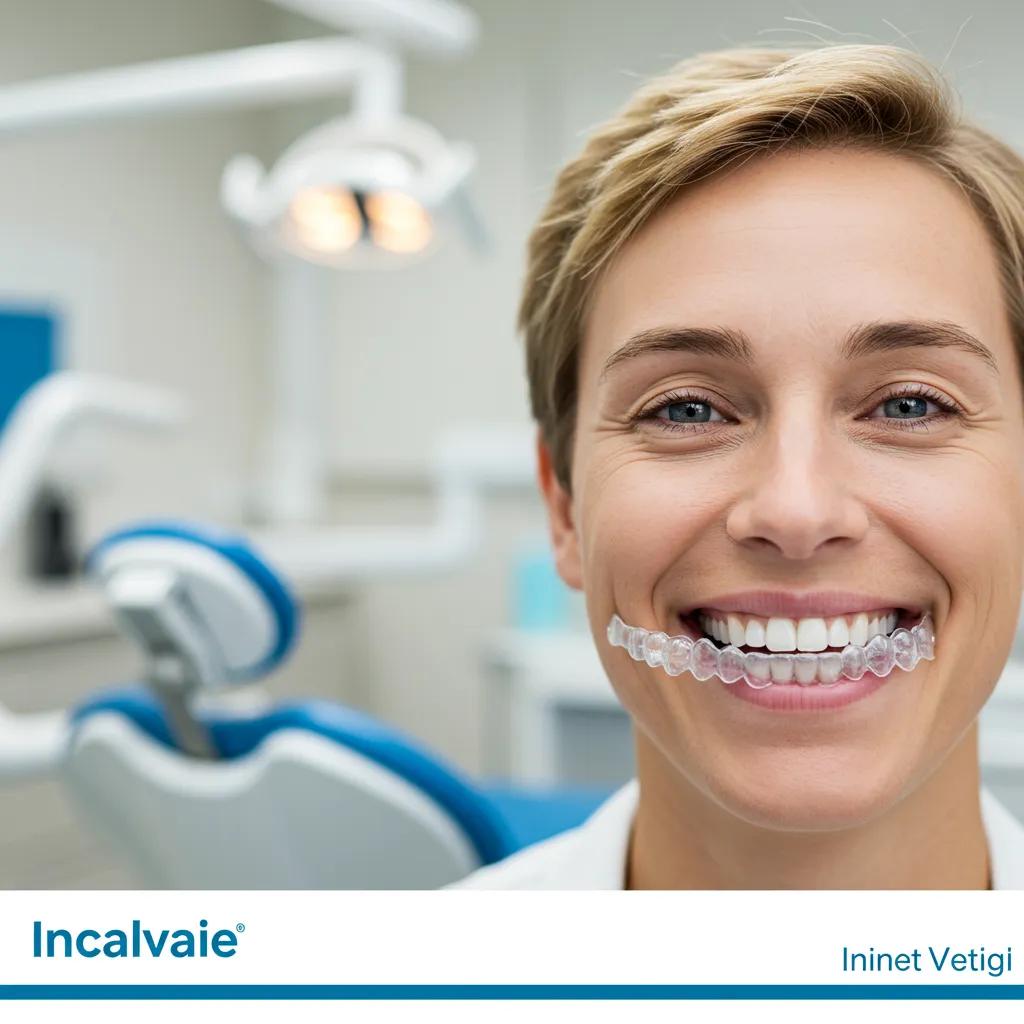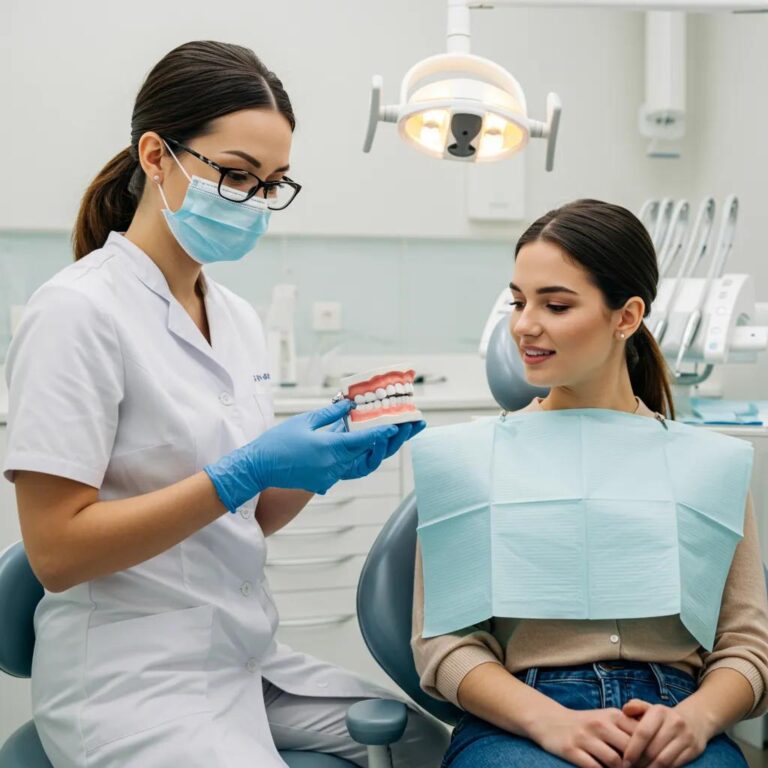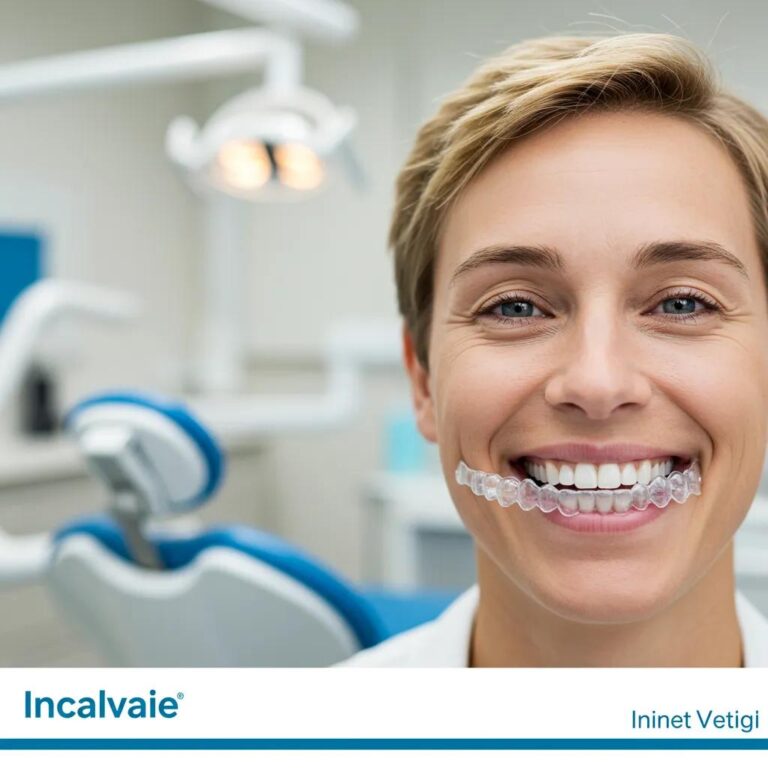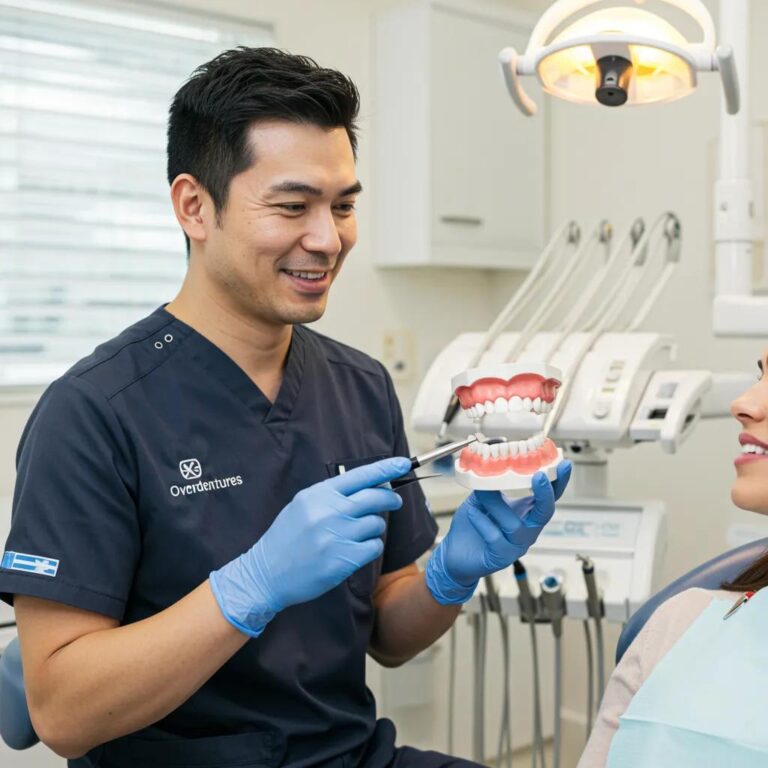Invisalign Clear Aligners Sacramento: Your Complete Guide to Cost, Benefits, and Treatment Time
Invisalign clear aligners are a modern, nearly invisible orthodontic system that straightens teeth using a planned sequence of removable plastic trays, delivering discreet and comfortable tooth movement for adults and many teens. This guide explains what Invisalign is, how clear aligner therapy works, the technologies behind it, expected treatment timelines, and what patients in Sacramento should know about cost and financing. Many people searching for invisible braces want predictable results without metal wires; Invisalign provides that predictability by combining digital planning with staged aligners to shift teeth gradually. The article maps clinical steps from consultation and iTero scanning through ClinCheck planning, aligner delivery, routine monitoring, and long-term retention, while also comparing Invisalign to braces and other aligner brands. You will learn typical Sacramento cost ranges, financing partners like Sunbit and CareCredit, candidate criteria, and how to schedule a consultation with Dental Krafts | Dr. Neha Sharma if you decide to pursue treatment locally.
What Are Invisalign Clear Aligners and How Do They Work?
Invisalign clear aligners are a clinician-prescribed sequence of custom, removable trays that apply gentle, targeted forces to move teeth into planned positions, producing aesthetic and functional improvements. The system uses digital treatment planning—ClinCheck—to map incremental tooth movements and manufacture aligners from SmartTrack material, which enhances fit and patient comfort. Patients wear each tray typically 20–22 hours per day so staged biomechanics achieve predictable progress while allowing removability for eating and hygiene. Understanding these basic mechanics clarifies why digital scanning and treatment planning are central to predictable outcomes and sets up how cost and timelines are determined.
What is Invisalign and how does clear aligner therapy straighten teeth?
Invisalign straightens teeth by prescribing a series of aligner trays that progressively reposition teeth according to a digital plan; each tray shifts teeth a small, controlled amount before the next tray is used. This process relies on planned biomechanics where attachments or elastics can be added to apply specific vectors of force, enabling movements that approximate bracket-and-wire orthodontics for many malocclusions. Wearing aligners consistently is critical: most clinicians recommend 20–22 hours per day so intended forces act continuously and tooth movement stays on schedule. The staged nature of the system allows monitoring and refinement if the clinical response differs from the predicted plan.
What materials and technology are used in Invisalign aligners?
Invisalign aligners use SmartTrack material, a proprietary flexible thermoplastic engineered to maintain consistent force and a secure, comfortable fit throughout wear; this material contributes to smoother tray seating and predictable tooth movement. Digital technologies like digital scanning (iTero) capture accurate 3D models without traditional impressions, which improves comfort and reduces remakes; ClinCheck software then simulates tooth movement and creates a visual treatment roadmap. 3D manufacturing translates the ClinCheck plan into precise aligners produced to tight tolerances, and clinicians verify fit and prescribe attachments or auxiliaries as needed. These technologies together reduce guesswork and support more efficient, patient-centered care.
Align Technology: Invisalign Clear Aligners, iTero Scanners, and CAD/CAM Software
Align Technology is a global medical device company, which is involved in the design, manufacture, and marketing of Invisalign® clear aligners, iTero® intraoral scanners and services for dentistry, and exocad® computer-aided design and computer-aided manufacturing (“CAD/CAM”) software for dental laboratories and dental practitioners. Consumer products that are complementary to principal products prescribed by doctors are also sold by the company mainly under the Invisalign brand. The consumer products sold by Align Technology include retainers, aligner cases (clamshells), teeth whitening products, and cleaning solutions. The company is focused on positioning itself as the main treatment provider preferred by orthodontists and general dental practitioners. The products are sold through a specialized sales force to its customers consisting of orthodontists, general practitioner dentists, aesthetic dentists, oral surgeons, and dental laboratories. The products are also sold to Dental Support Organizations. The manufacturing facilities for aligner fabrication and distribution are located in Mexico and China. The digital treatment planning facilities are located globally in regions which includes Costa Rica, China, Germany, Spain, and Japan. By December 2021, the company had approximately 22,540 employees. The company has made its presence in more than 100 countries either selling directly or through authorized distributors. By the end of December 2021, Align Technologies had 642 active US patents, 724 active foreign patents, and 736 pending global patent applications. The total cumulative monthly return for Align Technology stock was 91% compared to the cumulative monthly return of 52% registered by the market index S&P 500 Healthcare Equipment and Supplies Index during the 5-year period March 2018–February 2023. The average book value of equity as percent of market value of equity was 7.8% during the period 2018–2022.
Case 55 Align Technology Inc, 2024
How do Invisalign aligners compare to traditional braces?
Invisalign aligners are nearly invisible and removable, which improves aesthetics and oral hygiene compared with fixed metal braces, and they typically cause less soft-tissue irritation because trays are smooth and lack protruding wires. Braces may still outperform aligners for certain complex skeletal or tooth-movement cases that need rigid anchorage or very fine root torque; in those situations, conventional orthodontics remains the recommended approach. For many mild-to-moderate malocclusions, Invisalign offers similar clinical outcomes with the added lifestyle benefits of removability and fewer dietary restrictions. Understanding these differences helps patients choose the right pathway and prepares them to discuss case-specific suitability with a clinician.
How Much Does Invisalign Cost in Sacramento and What Are My Financing Options?
Invisalign cost varies by case complexity, treatment length, and any needed adjuncts; typical local ranges reflect these drivers and include options for staged payments and third-party financing to make treatment accessible. Costs increase with the number of aligners, need for attachments or elastics, refinements, and retention devices after active treatment, while simpler cases require fewer aligners and lower overall expense. Sacramento patients should consider upfront estimate factors as well as financing partners—Sunbit and CareCredit—that many practices accept to spread payments over time. For a precise, personalized cost estimate, schedule a consultation with digital scanning and planning so the provider can calculate a tailored quote based on your ClinCheck plan.
What factors influence the cost of Invisalign treatment?
Case complexity is the primary cost driver: mild crowding or spacing usually requires fewer aligners than complex bite corrections that need multiple stages and refinements. Treatment duration and the number of aligner trays directly affect price, as longer plans require more fabrication and monitoring visits, while attachments, elastics, and auxiliary procedures (like IPR or restorative work) add to cost. Refinements—additional aligner sets after initial treatment—are sometimes necessary and influence the final price when not included in initial estimates. Recognizing these drivers helps patients understand why an accurate cost requires an in-person evaluation and digital scan.
Introductory cost-driver breakdown:
| Cost Factor | How It Affects Price | Typical Local Impact |
|---|---|---|
| Case complexity | More complex motions → more aligners and appointments | Increases total cost moderately to significantly |
| Treatment duration | Longer timelines → more aligners and monitoring | Direct proportional increase |
| Attachments & auxiliaries | Additional materials and chair time | Small-to-moderate increase |
| Refinements | Extra aligner sets after initial plan | Can add notable cost if not included |
This table clarifies that multiple elements combine to form a final quote, and the next step is verifying financing and insurance options available locally.
Which insurance plans and payment options does Dental Krafts accept?
Dental Krafts accepts several financing options that help distribute the cost of Invisalign over time, and the practice lists Sunbit and CareCredit as available payment partners for patients seeking flexible plans. Insurance coverage for orthodontic procedures varies by plan and carrier, and Dental Krafts recommends scheduling a consultation so the office can verify individual insurance benefits and explain how coverage applies to clear aligner therapy. For many patients, combining flexible financing with a verified insurance benefit reduces out-of-pocket expense and makes treatment more manageable. Confirming plan specifics at the appointment ensures transparency before treatment begins.
How can I get a personalized Invisalign cost estimate?
To obtain a personalized Invisalign estimate, book a consultation that includes a comprehensive exam, digital X-rays, and a digital scan to generate a ClinCheck treatment plan and a clear cost projection. After the scan and planning, your clinician provides a tailored quote that accounts for aligner count, anticipated refinements, attachments, and retention needs, with typical turnaround for a detailed estimate within days of the initial visit. The office can also outline payment options, including Sunbit and CareCredit, and explain any new-patient promotions that reduce the barrier to starting care. Scheduling a consult provides the clinical information needed for an accurate, individualized price.
| Step | Action | Expected Timeline |
|---|---|---|
| Consultation & exam | Comprehensive exam with digital X-rays and discussion of goals | Single visit |
| Digital scan | iTero scan captures 3D model for ClinCheck planning | During visit |
| Treatment plan & quote | ClinCheck review and written estimate | Within days after scan |
This process ensures you receive an evidence-based estimate rather than a generic range, improving financial predictability for Invisalign care.
Invisalign for Aesthetic Orthodontic Treatment in Sacramento
Invisalign is used to provide a more esthetic orthodontic treatment than conventional orthodontic brackets and wires. The use of high-tech machineries, the more cost-effective and profitable Sacramento Dental Care will be.
BUSINESS PLAN–A GENERAL DENTAL PRACTICE IN SACRAMENTO, CALIFORNIA, 2020
What Is the Typical Invisalign Treatment Process and Timeline?
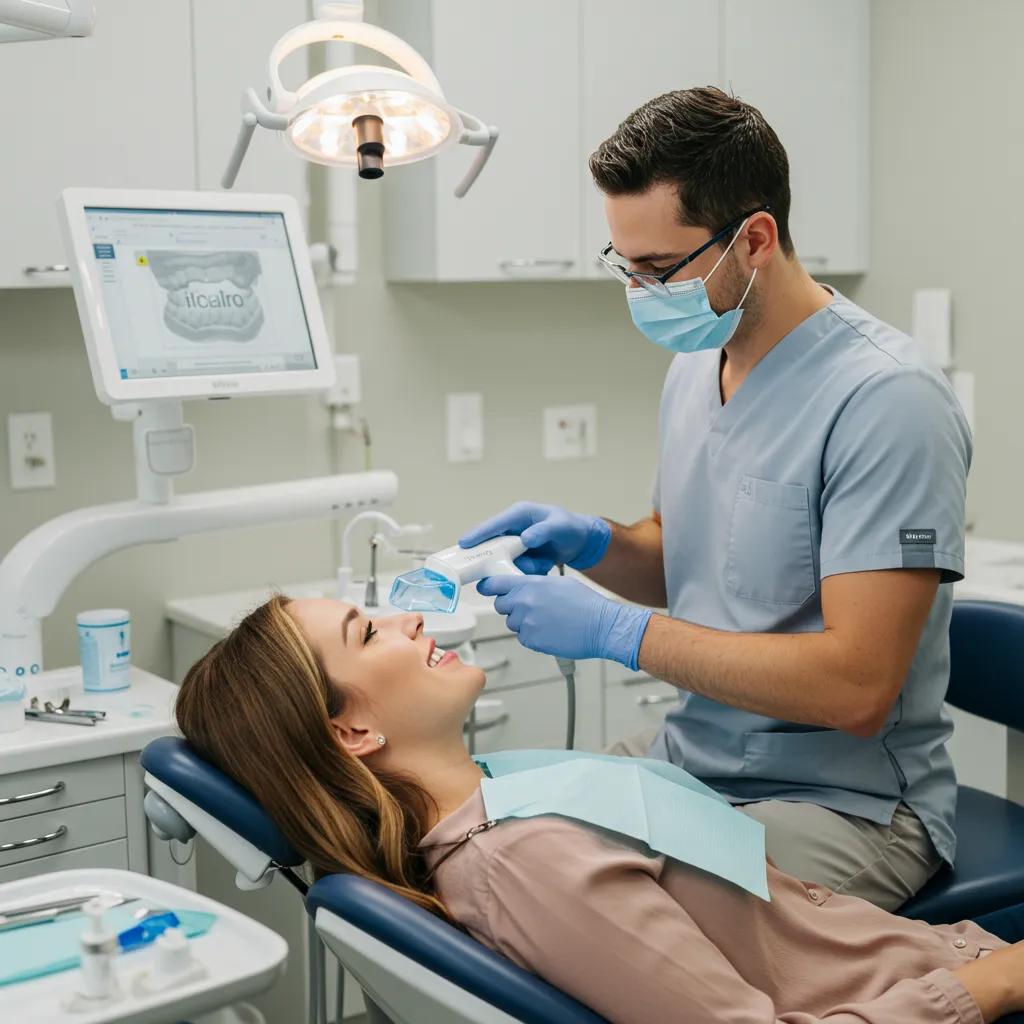
Invisalign treatment follows a sequence of steps from initial consultation to retention, each with typical timeframes that depend on case severity and patient adherence. The pathway begins with a diagnostic visit—often including a comprehensive exam and digital X-rays—then moves to digital scanning, ClinCheck planning, aligner fabrication, periodic check-ups, possible refinements, and finally retention with a retainer. Check-ups typically occur every 4–8 weeks to monitor progress and manage attachments or auxiliaries; adherence to prescribed wear time is the most important factor affecting timeline. Knowing these milestones helps patients set expectations and plan for coordination with work or life schedules.
What happens during the initial Invisalign consultation at Dental Krafts?
During the initial consultation at Dental Krafts patients can expect a comprehensive exam, digital X-rays, and a conversation about smile goals and medical history to ensure suitability for clear aligner therapy. A digital scan using an iTero scanner captures accurate 3D impressions without messy materials, and the clinician discusses possible treatment options and next steps based on those images. Financial considerations and available financing partners are introduced so patients understand pricing and payment pathways before commitments. This appointment establishes the diagnostic foundation for a ClinCheck plan and a personalized treatment timeline.
How are Invisalign aligners custom-made and fitted?
After the diagnostic scan, the ClinCheck treatment plan is created to map sequential tooth movements; this digital prescription informs manufacturing of custom aligner trays to fit your dental anatomy. When aligners arrive, the clinician checks fit, places any required attachments, and reviews wear instructions—usually 20–22 hours per day—and hygiene protocols to maintain oral health during treatment. Follow-up checks verify movement and may prompt refinements or adjustments; clinicians emphasize consistent wear because compliance directly influences outcomes. Clear communication at delivery ensures patients understand care, expectations, and when to seek help for fit issues.
What are the key steps and milestones during Invisalign treatment?
Invisalign treatment progresses through regularly scheduled milestones: aligner change cadence, periodic monitoring visits, mid-treatment assessments, and potential refinement phases that ensure the ClinCheck predictions align with clinical results. Patients typically change aligners every 1–2 weeks depending on the prescribed schedule and attend monitoring visits every 4–8 weeks for progress evaluation and any necessary adjustments. Mid-course refinements are common when small corrections are required, and clinicians use additional scans and ClinCheck updates to prescribe new aligners. This structured progression minimizes surprises and keeps treatment predictable when patients adhere to instructions.
A numbered overview of milestones:
- Aligner initiation: First aligners delivered with instructions and attachments placed if needed.
- Regular change schedule: Swap aligners every 1–2 weeks as directed.
- Monitoring visits: Office checks every 4–8 weeks to review progress.
- Refinements if needed: Additional scans and aligners to fine-tune results.
- Retention: Final retainer to stabilize outcomes after active treatment.
These milestones form a transparent timeline that helps patients anticipate each phase and plan accordingly.
How long does Invisalign treatment usually take for different cases?
Typical Invisalign treatment durations vary: mild cases can resolve in as little as 3–6 months, moderate cases commonly require 12–18 months, and complex cases may extend beyond 18 months depending on skeletal issues or need for adjunctive procedures. Patient compliance with daily wear and attendance at monitoring visits directly shortens or lengthens these averages, as missed wear hours slow tooth movement. Clinicians use the ClinCheck plan to estimate aligner counts and provide an individualized timeline during the consultation, which gives patients a realistic expectation based on the planned biomechanics. Understanding these ranges helps patients weigh time commitment against potential benefits.
| Case Type | Typical Duration | Example Outcome |
|---|---|---|
| Mild crowding/spacing | 3–6 months | Minor alignment improvements |
| Moderate malocclusion | 12–18 months | Comprehensive alignment and bite correction |
| Complex cases | 18+ months | May require adjunctive treatments |
This mapping clarifies how severity influences duration and directs patients to discuss realistic timelines during consultations.
What is involved in post-treatment retention and follow-up care?
Retention after Invisalign is essential: retainers maintain tooth positions while surrounding tissues adapt, and clinicians typically prescribe either removable clear retainers or fixed bonded retainers based on case needs. Initial retainer wear is often full-time for a set period, transitioning to nightly wear to preserve alignment long-term; compliance remains the key factor in preventing relapse. Periodic follow-up visits confirm retainer fit and long-term stability, and patients receive hygiene and maintenance tips to extend the life of retainers. Proactive retention planning protects the investment in tooth movement and supports lasting results.
What Are the Benefits of Invisalign Compared to Other Teeth Straightening Options?
Invisalign offers distinct clinical and lifestyle benefits such as near-invisibility, removability for eating and cleaning, and smoother patient experience due to SmartTrack material and digital planning, delivering both aesthetic and oral-health advantages. The system reduces some common brace-related complications—like plaque accumulation and mucosal irritation—because trays are removable and smooth, enabling better hygiene during treatment. For many adult clear aligners candidates, Invisalign provides an optimal balance between discreet aesthetics and clinical effectiveness, and the technology supports predictable planning through ClinCheck visualization. These strengths often make Invisalign a preferred choice for adult patients seeking invisible teeth straightening.
How does Invisalign improve dental aesthetics and patient comfort?
Invisalign improves aesthetics because clear trays are difficult to notice in normal conversation, allowing patients to undergo orthodontic correction with minimal visual impact; this benefit often increases treatment acceptance among adults. Comfort improves through SmartTrack material and the absence of metal brackets and wires, reducing soft-tissue irritation and sore spots associated with conventional braces. The removability of aligners eliminates many food restrictions and allows patients to maintain their usual dietary habits, which supports adherence. These combined benefits frequently translate into higher patient satisfaction during active treatment.
What oral health advantages do clear aligners offer?
Clear aligners enable superior oral hygiene compared to fixed braces because patients remove trays to brush and floss normally, reducing plaque buildup and the risk of white-spot lesions that can occur with poorly maintained brackets. Better access for cleaning supports periodontal health during treatment, which is important for long-term dental stability and overall oral health outcomes. Aligners also reduce the need for diet modification, lowering the incidence of bracket breakage and associated emergency visits, and they allow clinicians to monitor soft tissues more easily at routine checks. Prioritizing hygiene during aligner therapy preserves both aesthetic and functional results.
Who is a good candidate for Invisalign treatment?
A good candidate for Invisalign is a motivated patient—often an adult or responsible teen—with mild-to-moderate malocclusion who can commit to 20–22 hours of daily aligner wear and regular follow-ups. Patients with significant skeletal discrepancies or very complex tooth movements may require traditional orthodontics or adjunctive procedures, and clinicians will flag these during consultation and diagnostic imaging. Motivation and compliance are predictive of success with removable aligners, so candidacy includes behavioral readiness as well as clinical suitability. Discussing goals with a clinician helps determine the optimal approach for each patient.
What types of dental conditions can Invisalign effectively treat?
Invisalign can effectively treat crowding, spacing, certain overbites, underbites, and crossbites in mild-to-moderate presentations, often achieving esthetic alignment and functional bite improvements without fixed appliances. The system works well for anterior corrections, midline shifts, and moderate occlusal changes, and attachments or elastics can expand capabilities for more complex tooth movements. For severe skeletal discrepancies or large vertical corrections, clinicians may recommend braces or interdisciplinary care, but for many everyday alignment concerns, Invisalign provides a predictable, patient-friendly solution. Understanding these treatment envelopes guides realistic expectation-setting during the consultation.
An EAV comparison clarifies trade-offs:
| Option | Visibility & Comfort | Hygiene | Typical Treatment Time |
|---|---|---|---|
| Invisalign | Nearly invisible; smooth trays | High (removable) | Mild–moderate: shorter; complex: variable |
| Metal braces | Visible; possible irritation | More difficult to clean | Often effective for complex cases |
| Other aligner brands | Varies by system | Generally good if removable | Depends on clinician oversight |
This table highlights why Invisalign balances aesthetics and hygiene while acknowledging limits for certain clinical scenarios.
How Does Invisalign Compare to Traditional Braces and Other Clear Aligner Brands?
Invisalign differs from metal braces in materials and patient experience while sharing the same clinical goal of tooth movement; compared with some alternative clear aligner brands, Invisalign emphasizes clinician-led planning, proprietary materials, and integrated digital workflows. Clinician oversight, in-office scanning, and quality control typically differentiate clinician-directed systems from direct-to-consumer models that may lack hands-on monitoring. When deciding between options, consider treatment complexity, need for frequent adjustments, and the importance of in-person supervision—these factors influence both outcomes and patient safety. A balanced comparison helps patients choose the system best suited to their case and lifestyle.
What are the main differences between Invisalign and metal braces?
The primary differences center on appearance, removability, and hygiene: Invisalign is nearly invisible and removable, facilitating cleaning and fewer dietary limits, while metal braces are fixed and more visible but can deliver certain complex movements more efficiently. Biomechanically, braces can provide continuous, multi-vector forces and specialized anchorage that in some complex cases produces outcomes that aligners cannot replicate alone. Maintenance differs because fixed appliances require specific oral-care techniques to avoid decalcification, whereas aligners permit routine brushing and flossing. Determining which method is preferable depends on case complexity, lifestyle priorities, and clinician recommendation.
How does Invisalign compare to alternative clear aligner brands like CandidPro or Angel Aligner?
Clinician-led systems such as Invisalign prioritize in-office evaluation, digital scanning, and ongoing monitoring, which supports quality control and treatment predictability; some alternative brands offer varied levels of clinician involvement and business models. Direct-to-consumer approaches may reduce costs but shift responsibility for monitoring away from the clinician, which can increase risk of suboptimal outcomes or missed complications. For patients valuing hands-on clinical oversight and integrated digital planning, clinician-supervised aligner therapy generally provides stronger safeguards and better-quality control. Choosing a brand should weigh cost, clinician involvement, and case complexity.
What are the pros and cons of Invisalign versus other orthodontic treatments?
Invisalign pros include invisibility, removability, improved hygiene, and digital treatment visualization; cons include reliance on patient compliance and potential limitations for severe skeletal issues. Braces pros include robust biomechanical control for complex movements and fixed appliance reliability; cons are visibility and more challenging hygiene management. Other aligner brands may offer cost advantages or differing workflows, but clinician oversight remains a key differentiator in quality. A clinician-guided assessment helps patients weigh these pros and cons against their specific clinical needs and lifestyle preferences.
A brief pros/cons list summarizes choices:
- Pros of Invisalign: Discreet appearance, removable hygiene, digital planning clarity.
- Cons of Invisalign: Requires disciplined wear; may need refinements for complex cases.
- Pros of Braces: Strong mechanical control for complex tooth and root movements.
- Cons of Braces: More visible, dietary restrictions, harder maintenance.
This balanced view helps patients align treatment choice with goals and constraints.
Invisalign Clear Aligners Cost vs. Smile Direct Club
The expected cost of Invisalign clear aligners is $4,000, while less expensive Smile Direct Club aligners cost $1,800.
A Comparative Expected Cost Analysis Study on Dental Services and Products Used in the United States, 2020
What Do Invisalign Patients in Sacramento Say? Real Success Stories and Testimonials

Patient experiences frequently emphasize the convenience and discreet nature of Invisalign, with many reporting positive changes in confidence and daily life when teeth align as planned. Although individual stories vary, common themes include appreciation for fewer dietary limits, easier oral hygiene, and satisfaction with clinician communication and predictability of the digital treatment plan. Dental Krafts highlights patient-centered care and modern digital dentistry tools that support these outcomes, and prospective patients often find reviewing anonymized case examples helpful during consultations. Understanding typical patient feedback informs expectations and reassures candidates about real-world treatment trajectories.
What are common patient experiences with Invisalign at Dental Krafts?
Common feedback includes praise for comfortable tray wear, the convenience of removability for meals and hygiene, and appreciation for the visual ClinCheck preview that clarifies expected results before treatment begins. Patients often note that consistent aligner use and punctual monitoring visits were decisive in meeting projected timelines, reinforcing the role of compliance in achieving desired outcomes. Many highlight the reduced social impact of wearing near-invisible trays compared to traditional braces, which supports treatment acceptance among adults. These consistent themes guide new patients in preparing for treatment responsibilities and anticipated benefits.
Can I see before-and-after photos of Invisalign treatments?
Dental practices typically maintain anonymized before-and-after galleries that illustrate treatment outcomes across varying case complexities, and these images help patients interpret potential results relative to their own situation. Reviewing photos during a consultation is valuable because clinicians can explain how case severity, treatment time, and adjunctive procedures influenced each outcome, providing context for realistic expectations. The clinic will discuss consent for any public display and emphasize that individual results may vary based on adherence and biological response. Seeing representative cases aids in aligning goals with probable results.
How do patient reviews reflect Dr. Neha Sharma’s Invisalign expertise?
Patient reviews commonly reference professionalism, clear communication, and attentive follow-up care—qualities that support clinician-led aligner therapy and patient confidence in treatment plans. Reviews that highlight predictable outcomes and comfortable clinical experiences point to effective use of digital workflows like iTero scanning and ClinCheck planning under a dentist’s oversight. These thematic patterns suggest that patients value both technical competence and the personalized support that accompanies clinician-managed orthodontic care. Such feedback frames expectations for prospective patients considering similar treatment.
How Can I Schedule an Invisalign Consultation at Dental Krafts in Sacramento?
Scheduling an Invisalign consultation at Dental Krafts is the practical next step for Sacramento patients seeking a personalized plan: the consultation includes a comprehensive exam, digital X-rays, and a digital scan to produce a ClinCheck-based estimate and treatment discussion. Booking options include phone and online methods through the practice, and prospective patients should confirm available appointment windows and any required intake forms before the visit. Dental Krafts lists new-patient specials that can reduce the initial evaluation cost, and financing partners like Sunbit and CareCredit are available to help manage payments. These practical steps streamline access to care and clarify financial and clinical expectations.
What should I expect during my first Invisalign appointment?
Expect a structured visit that begins with a review of medical and dental history, a comprehensive oral exam, and digital X-rays to assess bone and tooth health relevant to orthodontic planning. An iTero scan will capture precise 3D data for ClinCheck treatment planning, followed by a discussion of goals, estimated timelines, and financing options based on the planned approach. The office will outline next steps, including scheduling for aligner delivery and any preparatory work, and provide clear instructions about financial arrangements and expected turnaround for a written estimate. This visit positions you to make an informed decision with clinical clarity.
How do I book an appointment online or by phone?
You can book by calling the practice phone number to speak with staff and arrange an appointment that fits your schedule; telephone booking helps clarify any pre-visit questions and confirms available times. Online booking is often offered through the practice’s website booking interface for convenience, allowing patients to select appointment types and preferred dates; confirm any requested documents or insurance information ahead of time. When booking, ask about new-patient specials and financing options to prepare for a smooth initial visit. Clear scheduling reduces delays and ensures the diagnostic steps proceed promptly.
Are there any special offers or promotions for new Invisalign patients?
Dental Krafts offers a new-patient special for a comprehensive exam with digital X-rays and complimentary cleaning for $59, which serves as an accessible entry point to diagnostic evaluation and initial treatment planning. The clinic also advertises a free consultation for single dental implants at $3499 as a separate promotion, and staff recommend contacting the office to confirm current promotions and how they apply to orthodontic consultations. These specials reduce upfront barriers to care and can make initiating an Invisalign assessment more affordable for new patients. Ask the practice about current offers when scheduling to verify eligibility and details.
- New-patient exam special: Comprehensive exam with digital X-rays and complimentary cleaning for $59.
- Consultation offers: Free consultation referenced for single dental implants at $3499 (separate service).
- Financing partners: Sunbit and CareCredit available to help spread payments.
These options make starting care more accessible; during the consultation, staff will confirm which promotions apply to your planned orthodontic treatment.

